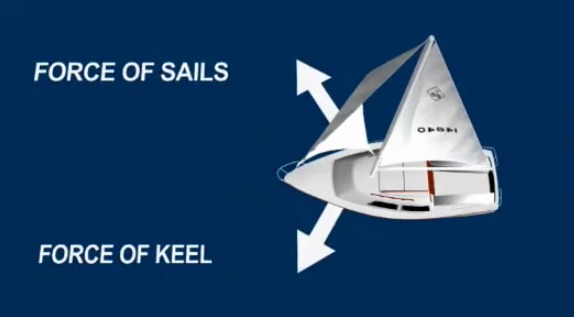Sail a boat
Build a small model sailboat from paper or balsa, then test and sail it in a tub or pond while adjusting the sail to steer.



Step-by-step guide to sail a model sailboat
Some things you should know about Sailing. | ABC of Sailing
Step 1
Gather all the materials from the list and put them on a clear workspace so everything is easy to reach.
Step 2
Decide whether you will build your boat from folded paper or from a carved balsa hull and choose the material you will use.
Step 3
Make a paper hull by folding a sheet into a simple boat shape using these folds: fold in half lengthwise then fold the two top corners to the center and fold up the bottom edges to form the hull.
Step 4
Make a balsa hull by drawing a slim boat shape on the wood then cut and sand the shape smooth with adult help.
Step 5
Cut a straw or skewer to mast length and stand it upright where you want the sail to go on the hull.
Step 6
Cut a sail shape from paper and decorate it with colours or drawings to make your boat unique.
Step 7
Attach the sail to the mast using tape or glue so it stands firmly upright.
Step 8
Add ballast by pressing a small piece of clay or taping a coin to the bottom center of the hull to help the boat balance.
Step 9
Seal any paper hull seams with tape or a thin glue layer so the boat stays dry and floats longer.
Step 10
Gently place your boat in the tub or pond and watch how it floats and where it tips.
Step 11
Practice steering by changing the sail angle and moving the small ballast until the boat turns the way you want.
Step 12
Share a photo or description of your finished sailboat on DIY.org so other kids can see your design and steering tricks.
Final steps
You're almost there! Complete all the steps, bring your creation to life, post it, and conquer the challenge!


Help!?
What can we use instead of balsa wood or paper if those materials are hard to find?
Use sturdy cardboard or a recycled plastic food tray as a hull and swap a wooden skewer mast for a coffee stirrer or chopstick, sealing seams with tape instead of a thin glue layer.
My boat keeps tipping over or taking on water; what should I try to fix it?
Center the ballast (small piece of clay or taped coin) under the hull, seal any paper hull seams with tape or a thin glue layer, and make sure the mast and sail are mounted upright and not off-center.
How can I adapt this activity for younger children or older kids who want more challenge?
For younger children stick to a simple folded paper hull with an adult cutting and attaching the mast and sail, while older kids can carve and sand a balsa hull, experiment with different sail shapes, and refine steering by moving the ballast.
What are some ways to enhance or personalize our sailboat after following the main steps?
Attach a small clothespin or folded cardboard rudder to the stern, decorate the paper sail and hull with waterproof markers or paint, or add a cardboard keel to improve stability before sharing your design on DIY.org.
Watch videos on how to sail a model sailboat
How to Draw A Sail Boat In A Lake For Beginners | Step by Step Drawing
Facts about model sailboat building and basic sailing for kids
⛵ A paper or balsa sailboat floats because it pushes water aside (buoyancy) equal to the boat's weight — smart hull shapes help it stay up!
💧 Adding a small keel or a paperclip as ballast can make a toy sailboat much more stable and less likely to tip.
🪵 Balsa wood is one of the lightest commercial woods and is super easy to carve, which is why hobbyists love it for tiny boats and planes.
🏁 Model yacht clubs run races worldwide — model sailboats (including radio-controlled ones) are a real competitive hobby.
🌬️ You steer a sailboat by changing the sail angle (trim) and using a rudder or balance — the wind does the work!
How do I build and sail a small model sailboat with my child?
What materials do I need to make a paper or balsa model sailboat?
What ages is sailing a homemade model sailboat suitable for?
What safety tips and variations should I know when sailing homemade boats?


One subscription, many ways to play and learn.
Only $6.99 after trial. No credit card required



